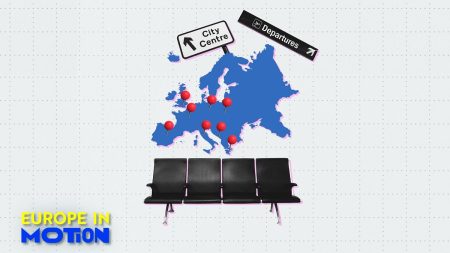Norway, Sweden, and the Netherlands are leading the way in electric car registrations in Europe, with Oslo and Vestland in Norway topping the list with the highest density of electric vehicles. The EU is also seeing high percentages of electric cars in regions such as Flevoland, Utrecht, and Stockholm. However, certain areas in Greece and Spain have very low numbers of electric car registrations, primarily due to a lack of EV charging stations. In terms of overall car ownership, EU citizens have an average of 0.56 passenger cars per inhabitant. The Aosta Valley in Italy has the highest rates of car ownership, with nearly two and a half cars per resident. On the other end of the scale, Mayotte in France has the lowest car ownership rates in Europe.
Some regions in Europe have very small populations, such as Jan Mayen and Svalbard in Norway, which may skew the data in terms of electric car registrations. Turkey has the highest number of areas with almost no electric car registrations, along with certain Spanish overseas territories and Greek islands. In mainland Europe, areas with the lowest numbers of electric cars are mainly in Serbia and Greece. This discrepancy in electric car registrations across different regions highlights the need for more EV charging infrastructure in certain areas to encourage the uptake of electric vehicles.
Favourable taxation policies play a significant role in influencing the record rate of car ownership in regions like the Aosta Valley in Italy. While this region has nearly two and a half cars per resident, regions like Mayotte in France have much lower rates of car ownership. Greece’s Peloponnisos and the French overseas department of Guyane also have low rates of car ownership compared to the European average. Additionally, several European capitals, including Berlin, Vienna, Stockholm, Brussels, and the Amsterdam region of North Holland, have some of the lowest rates of cars per thousand inhabitants in Europe.
The data on electric car registrations and overall car ownership in Europe reflect regional differences in infrastructure, taxation policies, and cultural preferences for electric vehicles. Norway, Sweden, and the Netherlands are leading the transition towards electric vehicles, while certain regions in Greece, Spain, and Turkey still have low numbers of electric cars. The Aosta Valley in Italy stands out for its high rates of car ownership, driven by favourable taxation policies, while regions like Mayotte in France have much lower rates of car ownership. Addressing these regional disparities will be essential for promoting sustainable transportation and reducing carbon emissions across Europe.
Efforts to increase the number of electric cars on the roads in Europe will require investment in EV charging infrastructure, incentives for electric vehicle adoption, and policies to encourage the phase-out of internal combustion engine vehicles. Regions with low numbers of electric car registrations, such as parts of Greece, Spain, and Turkey, will need to prioritize the development of charging networks and other support systems to accelerate the adoption of electric vehicles. Encouraging car-sharing schemes, promoting public transportation, and implementing urban planning strategies that prioritize walking and cycling can also help reduce car ownership rates and reliance on fossil fuel-powered vehicles in European cities.
Overall, the data on electric car registrations and car ownership rates in Europe offer insights into the regional variations in vehicle electrification and mobility patterns. While some regions are leading the way in adopting electric vehicles, others are lagging behind due to infrastructure constraints and other barriers. By addressing these challenges through targeted policies and investments, European countries can accelerate the transition towards sustainable transportation systems and reduce the environmental impact of traditional car ownership. initiatives to promote electric vehicle adoption and sustainable mobility will be essential for achieving the European Union’s climate targets and creating cleaner, more efficient transportation networks across the continent.













